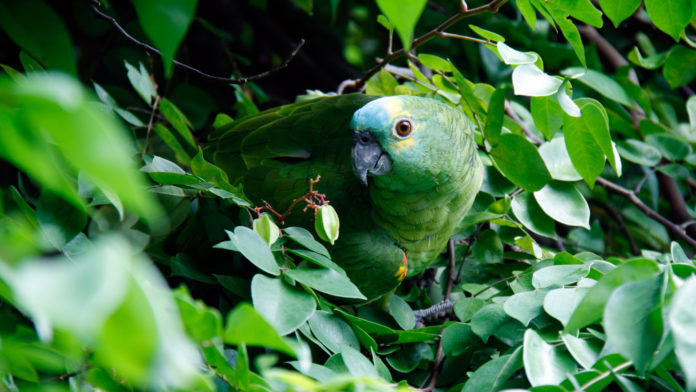Conservation efforts for critically endangered species starts with knowing where they live, but it’s not always easy to spot them. In addition to being rare, they could be hidden or sporting excellent camouflage. So what if we could pull clues straight out of the air?
Animals constantly shed bits of genetic material as they release fur, dead skin cells and feces to their environment. Collecting environmental DNA — also known as eDNA — has previously been used on water and permafrost, but researchers didn’t know how quickly similar material might settle out of the air, or how far it might be able to travel.
Elizabeth Clare, assistant professor of biology at York University, conducted her study in the UK as a senior lecturer at Queen Mary University of London. The study was published in Current Biology.
She and her team attached special filters to vacuum pumps in hopes of collecting eDNA from the air at the Hamerton Zoo Park. The zoo was the perfect place to collect samples, as the exact species present and their locations is known. That helps researchers match their measurements to maps of where the animals live.
Each vacuum pump was run for 30 minutes, and 72 samples were collected from various indoor and outdoor locations around the zoo. The team then extracted the eDNA off the filters and amplified the number of copies using polymerase chain reaction (PCR). The amplified samples were then compared against databases of known animal genomes to see which species were represented.
Before the study, Clare didn’t know how close she would need to be to detect eDNA from a particular animal. If she needed to be within a few meters to capture a species with her approach, it wouldn’t be a very powerful tool. It turns out that she could take a sample from hundreds of metres away and species could still be represented. Dozens of species could be distinguished in a single sample.
Even when animals were being housed inside sealed enclosures that were closed to the public (such as to protect hibernating species from being disturbed), they were still represented in samples collected outside the building.
The samples even showed species living outside the zoo, like the endangered Eurasian hedgehog that lives nearby in the wild.
The team did, however, pinpoint a handful of species that weren’t detected, even though they were known to be present nearby. Hopefully as the technique matures, fewer omissions will happen.
Being able to sample large areas using airborne eDNA could be an alternative to more time-intensive biosurveys. Not only do biosurveys take a lot of work, but the terrain can also be hazardous. People on site also have to physically spot each animal for them to be counted, which is a tall order.
Used in the wild, eDNA capture could help form data-driven arguments for environmental protection of specific areas; these might be places where endangered animals live, or ones that support exceptional biodiversity.
“The non-invasive nature of this approach makes it particularly valuable for observing vulnerable or endangered species as well as those in hard-to-reach environments, such as caves and burrows. They do not have to be visible for us to know they are in the area if we can pick up traces of their DNA, literally out of thin air,” said Clare in a press release.
“Air sampling could revolutionize terrestrial biomonitoring and provide new opportunities to track the composition of animal communities as well as detect invasion of non-native species.”








































